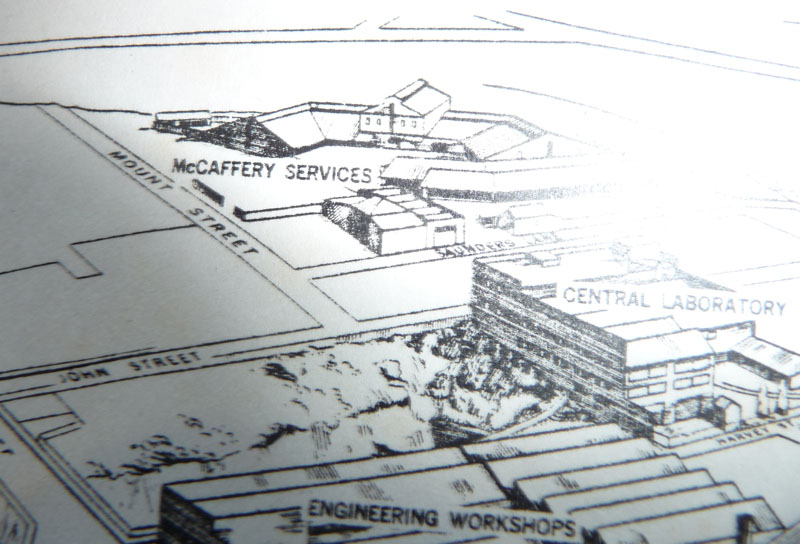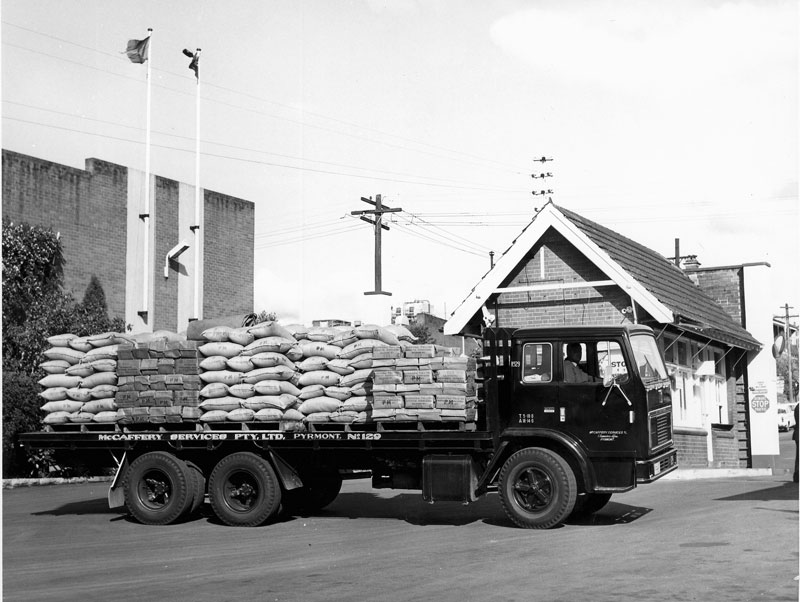McCafferys Hill
Date Built: 2002-2004
Architect: Daryl Jackson Robin Dyke
McCafferys Tower, Mews, Johns Court, The Stables, Chalet, Cliff Top. 17-storey tower, three-and four-storey buildings. Highest point of the peninsula. Overlooks Saunders’ quarries. Site of McCafferys haulage company
McCafferys Hill
1950
For half a century, McCafferys Clydesdales were famous for the strength and precision with which they hauled wagons through the CSR complex and delivered refined sugar to Darling Harbour and the city. What changed first was the company structure. Haulage was essential in the refinery operations and the relationship was solidified when CSR bought into McCafferys in 1920; although the company retained its identity. The company was now able to build new stables and administration offices – a Federation Free Classical Style stables building, widely admired. A 1921 analysis described this structure as
the latest in stable accommodation from an engineering point of view …The plan, designed on the axial basis, represents one third of a hexagon; the centre, being one side of the figure, is utilised for the workshops and stores, with a loft above. It is from this centre building that the work of administration of the stables is rendered efficient, for here every utility is housed ready for use, with the shortest distance between it and its point of application.
In 1937 CSR began to buy lorries, perhaps because roads were sealed, and horses found it difficult to gain a foothold. In any case the Wide Tyre Ordinance of 1935 limited the loads that could be carried on metal tyres, and that restricted the use of horse-drawn wagons.
The stable building was outwardly unchanged, but actually converted into a garage. The last horses departed in 1955.
Meanwhile CSR had diversified into distilling (from 1901) and opened laboratories and engineering works, so the workforce mushroomed. CSR bought houses whenever they could, and renovated them for key employees. Apart from pubs and the public school, almost all housing was rented to McCafferys, the refinery or distillery workers.
The fate of the public school reflects the transformation of the precinct. The school was crammed by 650 students in 1920, but shrank to 245 in 1933 and closed soon afterwards. Pyrmont had become a fully industrial precinct of Sydney and many houses were demolished for wool stores and flour mills. The school building was used as a naval facility during the Second World War. Then it was acquired by the City of Sydney as a community centre: it was assumed that Pyrmont would never again have sufficient children to fill a school.










